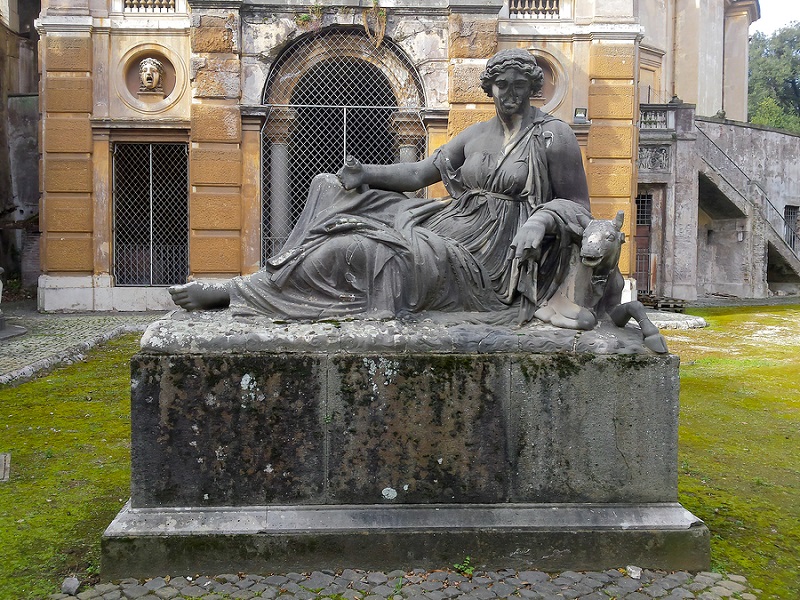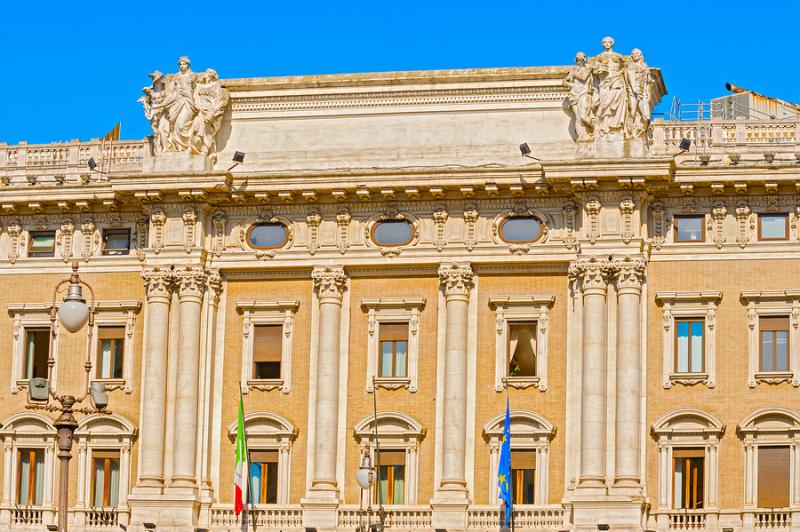Rome’s countless attractions draw millions of tourists each year, but hiding in plain view are a number of sites, the glorious palazzi still owned by the princely families who once ruled the city, that might not make it onto the usual visitor’s itinerary. Yet for anyone wanting to fully experience the incomparable richness of the Eternal City, these palaces and villas are must stops. Here are five to experience now.
Palazzo Colonna. Lavishly illustrating the splendor of Roman Baroque style, the Palazzo Colonna, one of Europe’s most spectacular private residences, spans a city block (its facades front the Piazza SS Apostoli and the Via della Pilotta). Home to Prince Prospero Colonna, who with his children, represent the 33rd and 34th generations of a family that have been among Rome’s most influential for nearly a thousand years, the palazzo opens two sections--the Galleria Colonna and Princess Isabelle Apartments--to the public one day a week. The Galleria, which can claim Bernini as one of its architects, contains the Great Hall, a marvel of celebratory exuberance with such lavish frescoes, gleaming marbles and gilded moldings, you don’t know where to look first.
This splendid room was designed to immortalize one the Colonnas’ most prominent ancestors--Marcantonio II Colonna, commander of the Papal fleet, who vanquished the Ottoman Turks at the Battle of Lepanto in 1571. (It also played a part in one of the city’s best-known movies, Roman Holiday. Here, Audrey Hepburn in the part of Princess Ann, was filmed meeting the press, confirming her commitment to royal duties in spite of her nascent love for an American journalist.) The Galleria contains a number of rooms, where you’ll find superb works by Bronzino Ghirlandaio, Tintoretto, and Van Dyck, among other masterpieces.
The Mangiafagioli (“The Bean Eater”), by Annibale Carracci, painted in the 1580s, was an influential piece in the development of Western Art, impacting the work of Impressionists Van Gogh and Degas. The Princess Isabelle apartments, in an older wing of the building, pays homage to one of Rome’s grande dames, Donna Isabelle Colonna. A major force in Roman society, the princess was often regarded as Italy’s queen in absentia after the Italian monarchy was abolished in 1946. Among the countless treasures in these lavish rooms, where she lived until her death in 1984, are landscapes by Brueghel and frescoes by Pinturicchio.
For more information: Galleriacolonna.com: Open Saturdays from 9 AM to 1:15 PM. Entrance: Via della Pilotta 17. All other days, including Saturday afternoons are by private appointment. Tel.: 39 06 6784350. Email: info@galleriacolonna.it
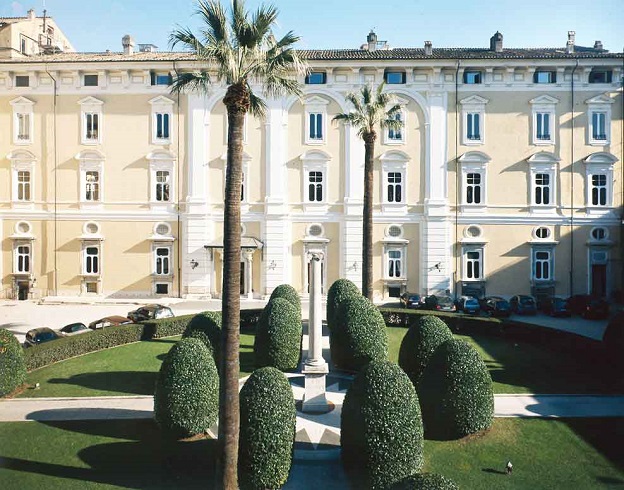 The inner courtyard: Photo credit: http://www.galleriacolonna.it/
The inner courtyard: Photo credit: http://www.galleriacolonna.it/
Palazzo Doria Pamphilij. Like the Colonnas, the Doria Pamphilij are among a small group of Roman nobles who retain enormous palaces and art collections. This palazzo, because of its size (it has more rooms than Buckingham Palace, about 1000 to Buck House’s 775) and the vastness of its holdings, provides an exceptionally immersive experience--you time-transport back to the 18th century when you enter the building on Via del Corso.
Here you’ll find a collection that includes a staggering amount of Old Masters--works by Raffaelo, Bronzino, Tiziano, Caravaggio, Tintoretto, and Velazquez’s famous portrait of the family’s Pope Innocent X. The Gallery of Mirrors, in haute rococco style by Gabriele Valvassori, holds its own against the Galerie des Glaces in Versailles. In the private apartments, you can explore nine ornate rooms, many themed by color (like the White House only with lots more ormolu), a throne room (de rigueur if there was a Pope in the family) and a ballroom whose design is of more recent vintage (19th century).
The history of the Doria Pamphilij, whose family tree includes Rome’s most powerful and aristocratic families, is embedded with the city. One remarkable chapter occurred during World War II when Filippo Andrea Doria Pamphilj, fighting for the Resistance, took part in a plot to rid Nazis stationed at the palazzo, even if it meant having to blow up his family’s historic residence. Today, prince Jonathan Doria Pamphilij lives in a private part of the palace with his young family.
For more information: doriapamphilj.it/roma/en/ Open every day from 7 AM to 7 PM, certain holidays excluded. Via del Corso, 305. Tel: +39 06 6797323
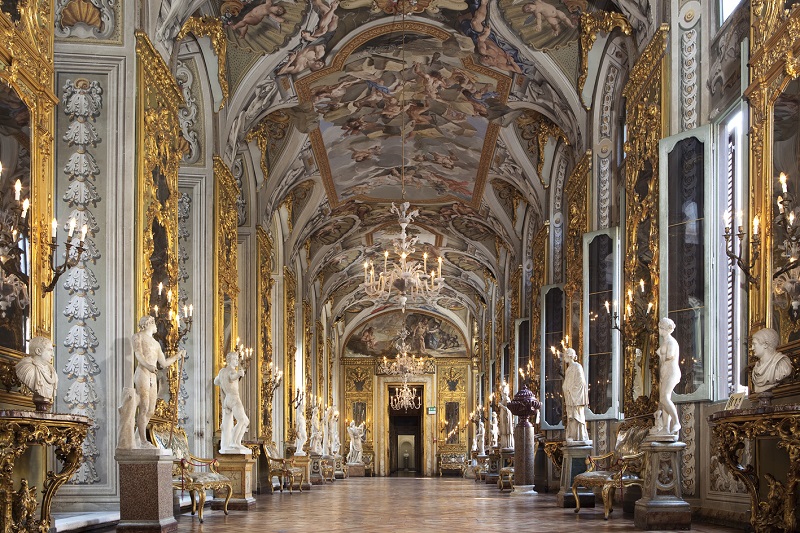 Photo credit: http://romeonrome.com/
Photo credit: http://romeonrome.com/
Palazzo Patrizi. Owned by a prominent Sienese family since the mid-17th century, the Palazzo Patrizi shows Roman grandeur on a mansion-sized (rather than mega-palace) scale. But there’s plenty of glamour: frescoes by Raffaello Vanni, grand salons (on the second floor) with period furnishings, brocade-covered walls, and paintings by Vasari, Guercino, and Maratta. The Palazzo Patrizi hosts special dinners and cocktail gatherings, and even cooking classes helmed by the Marchesa Elisabetta Patrizi Montoro.
For more information about private tours and events:palazzopatrizi.it, info@palazzopatrizi.it, Piazza San Luigi dei Francesi. Tel.: 39 06 87901173
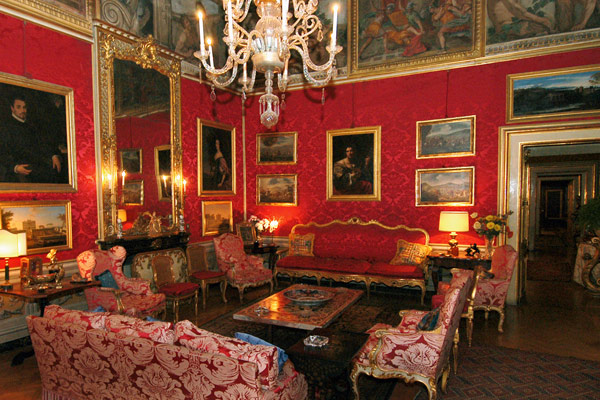 sala rosso: Photo credit: http://www.palazzopatrizi.it/
sala rosso: Photo credit: http://www.palazzopatrizi.it/
Casino dell’Aurora, part of the Palazzo Pallavicini-Rospigliosi, is an intricate and elegant example of early Roman Baroque architecture. Commissioned in the early 1600s by a Borghese cardinal and built, as part of a complex on the former site of the Baths of Constantine, the Casino’s two-story layout mimics that of a period hunting lodge, with a central hall flanked by two smaller ones on each floor. In 1704 the Pallavicini-Rospigliosi, a powerful family with roots in Genoa and the Emilia region, took ownership of the property, which they have retained to the present day.
The main attraction here is the famous L’Aurora fresco by the Bolognese artist Guido Reni, from which the Casino takes its name, although you’ll also find work by by Antonio Tempesta (the “Triumph of Fame” and “The Triumph of Love”), Cherubino Alberti, and Paolo Bril. Ancient marbles, elaborate travertine moldings, Roman-era sculpture, and a facade enriched with sarcophogi, are the Casino’s other attractions.
For more information: casinoaurorapallavicini.it Open (the main room with Guido Reni’s fresco) the first day of every month (excluding January) from 10.00 AM to 12 noon and from 3.00 to 5.00 PM, Via XXIV Maggio, 43. The casino is also available for private meetings and dinners.Tel.: +39 06 4814344; +39 06 83467000. Email: aurorapallavicini@saita.it
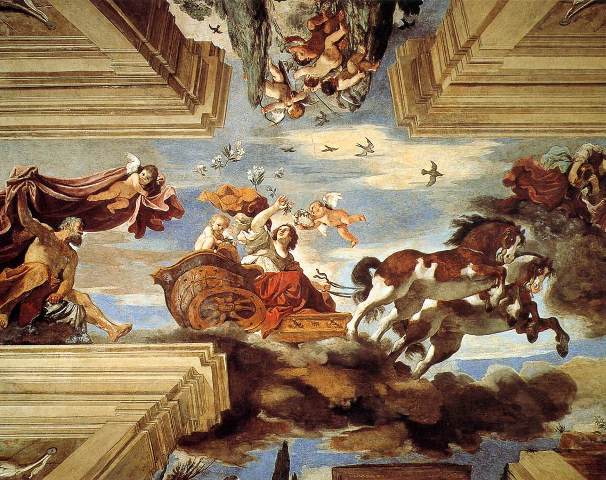 Aurora Fresco, Photo credit: http://www.prolocoroma.it/
Aurora Fresco, Photo credit: http://www.prolocoroma.it/
Villa Albani Torlonia. Built in 1758 at the request of Cardinal Alessandro Albani, a noted antiquarian, the villa became a magnet for English aristocrats Grand Touring their way through the continent. Its repository of priceless ancient Roman artifacts is believed to be the largest collection after the Vatican’s.
The style of the villa, designed to serve more as a museum than private dwelling, mixes Baroque and neo-classical styles. Former Rome mayor Walter Veltroni lead an initiative to buy the property for the city when in office (Silvio Berulsconi was rumored to be interested as well), but the current owner, Prince Torlonia, didn’t budge.
And perhaps for very good reason: Art historians regard its collection of ancient sculptures as among the most important in the world. The museum also has paintings by such masters as Perugino and Tintoretto.
For more information: Requests for a visit must be made to amministrazione@srdps.191.it, Tel.: 39 06 6861044, Fax: 39 06 68199934.The villa is located at Via Salaria 92.
